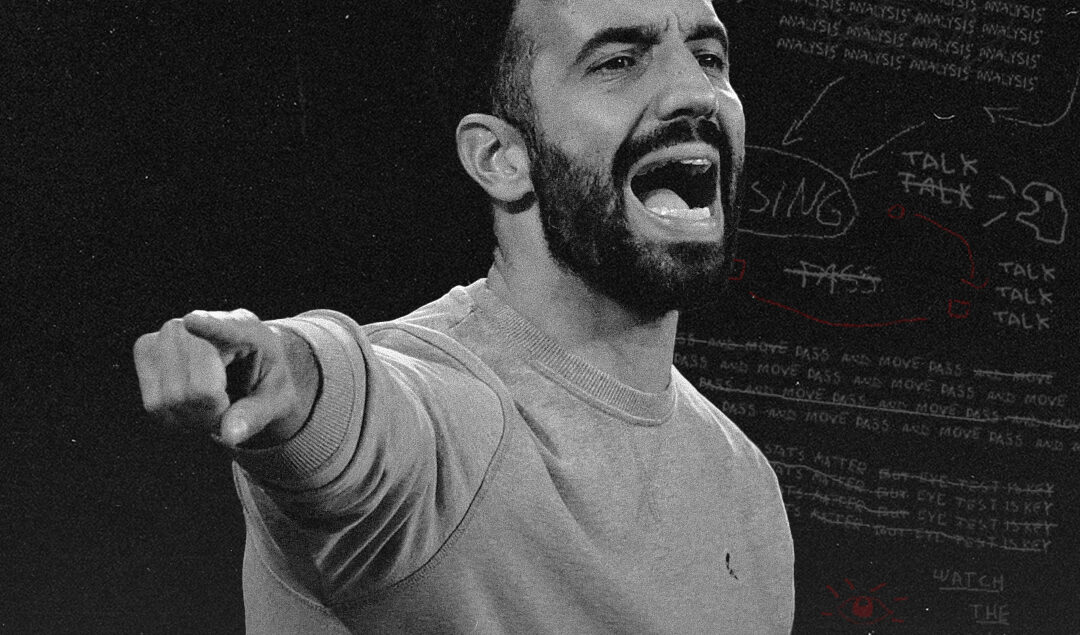Amorim’s United Blueprint — Part 1: The Vision: Implementing a New Tactical Identity
With Rúben Amorim set to take charge of his first game in just over a week and scheduled to lead his first training session on Monday morning, the Portuguese manager has likely spent the past week doing the same thing as us football fans: planning. He will be mapping out his best starting eleven, determining which players can fit into specific roles, and working with Dan Ashworth and Jason Wilcox to identify positions that need improvement or additional depth.
In this first part of a 3-part series looking at Amorim and how he will be planning out the current Manchester United squad, we will be first looking at his overall tactical system in the different phases of play throughout a game, exploring how his teams build out from the back, how they settle in the final third and how they look without the ball. Introducing: Part 1: The Vision: Implementing a New Tactical Identity.
In Possession:
Depending on the strength and the tactics of the opposition, Amorim can set his team up in several different ways. In the Champions League, we have seen Amorim happily concede possession to the opponent, shown by recent games in the Champions League where Sporting only held 43% of the ball against Dutch side PSV Eindhoven and a staggering 27% against Man City in which they came out deserving 4-1 winners.
On the other side of his tactics though is a team that is more than happy to dominate the ball, which is normally the story in most league and cup games, shown by the 71% of possession against the usual top 4 team Braga in a 4-2 win and 69% against Nacional in the Taça De Liga.
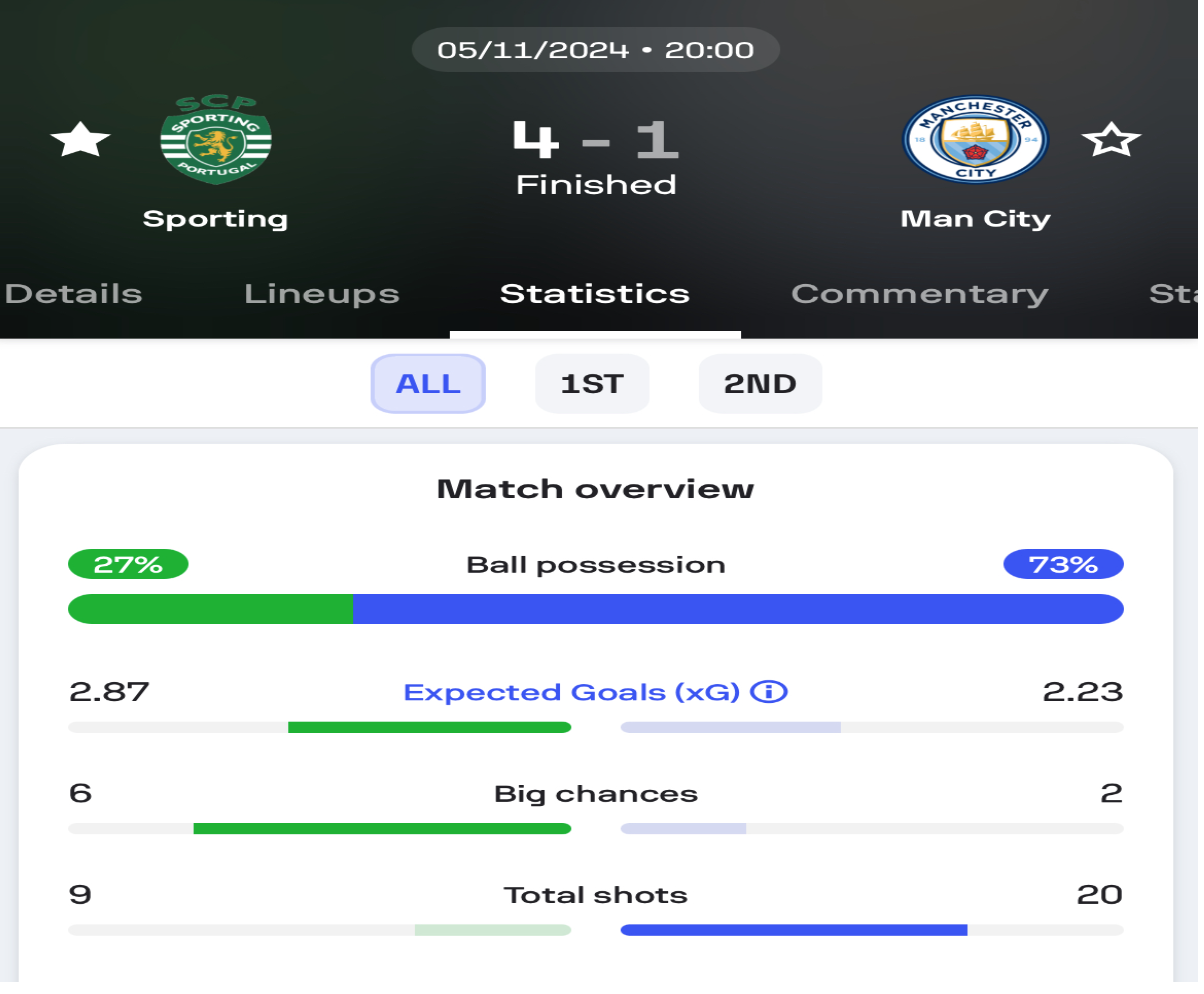
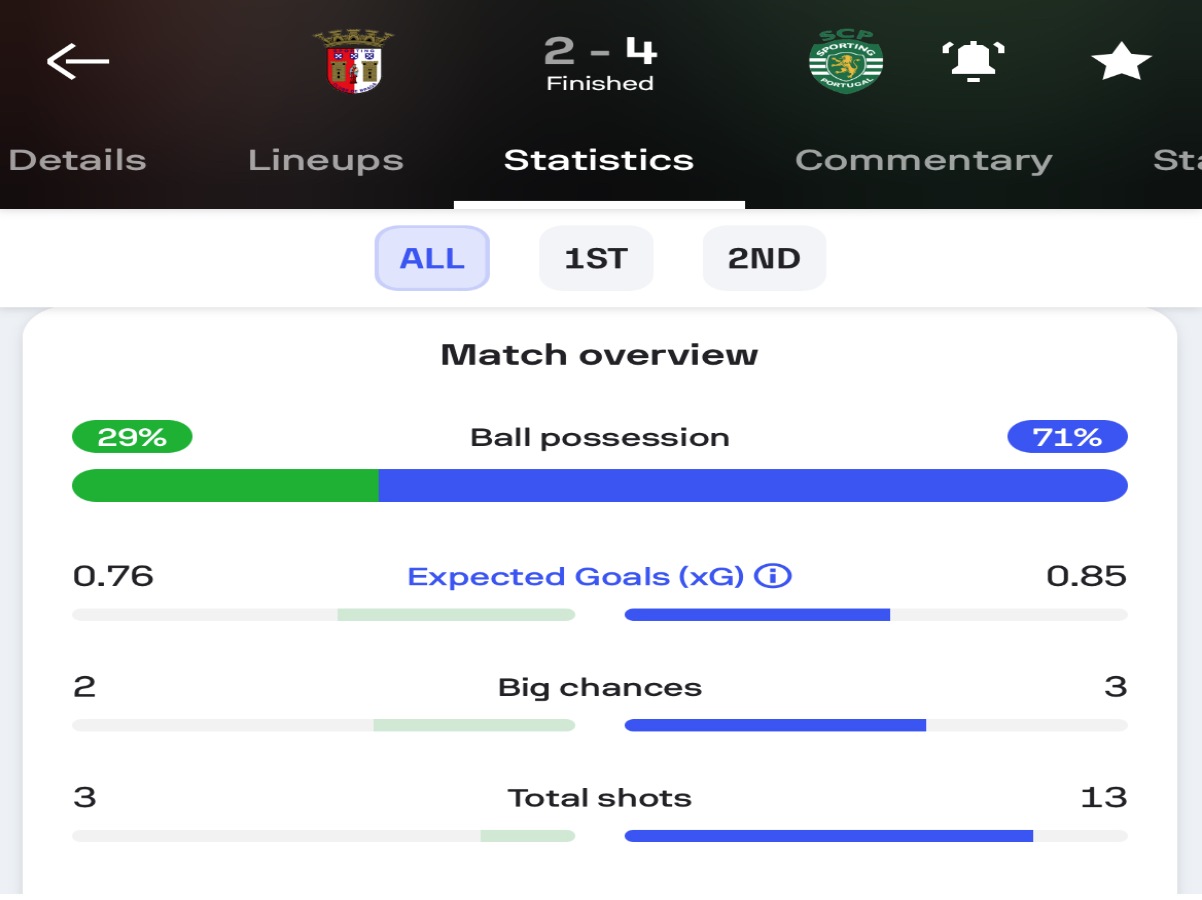
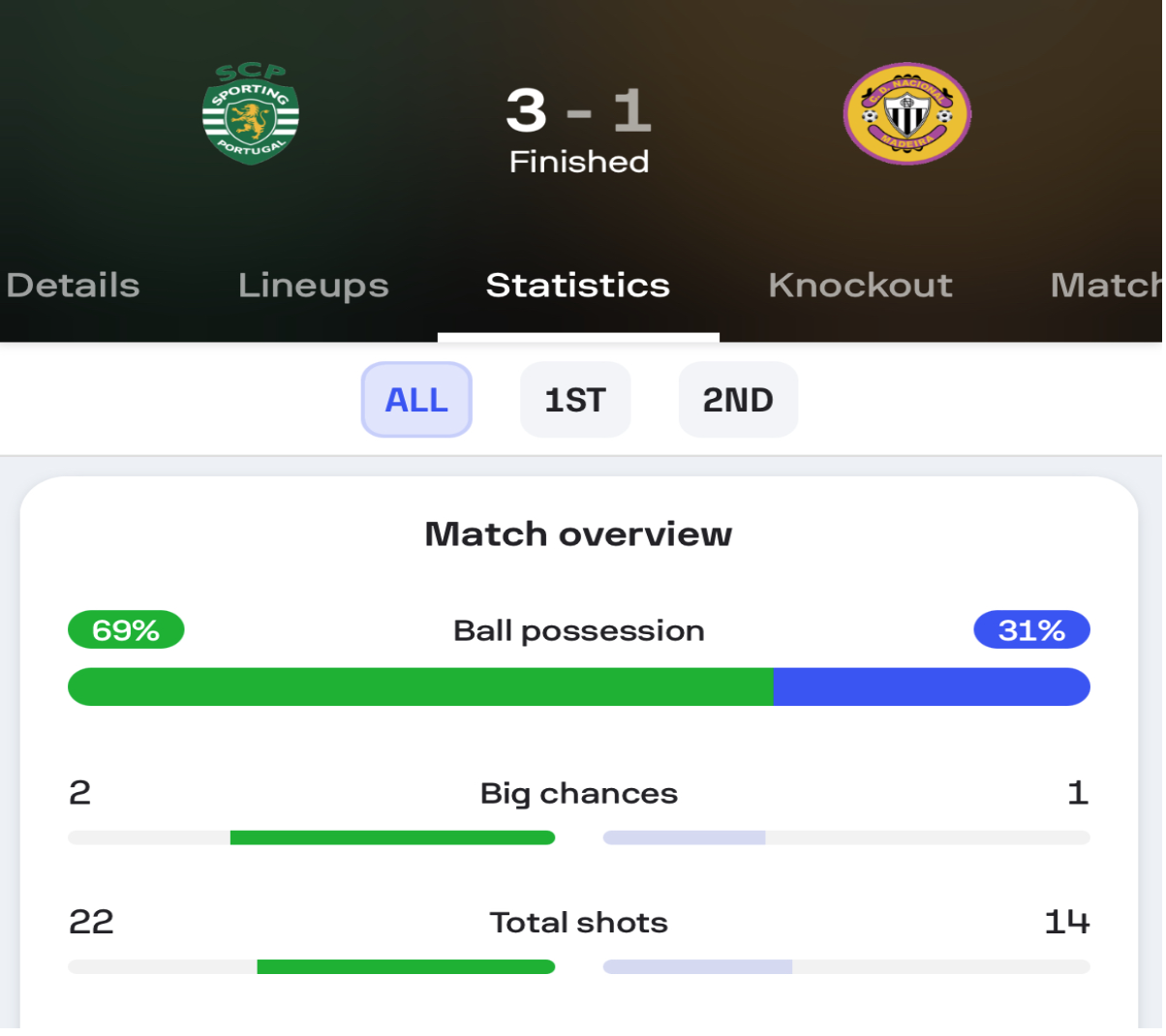
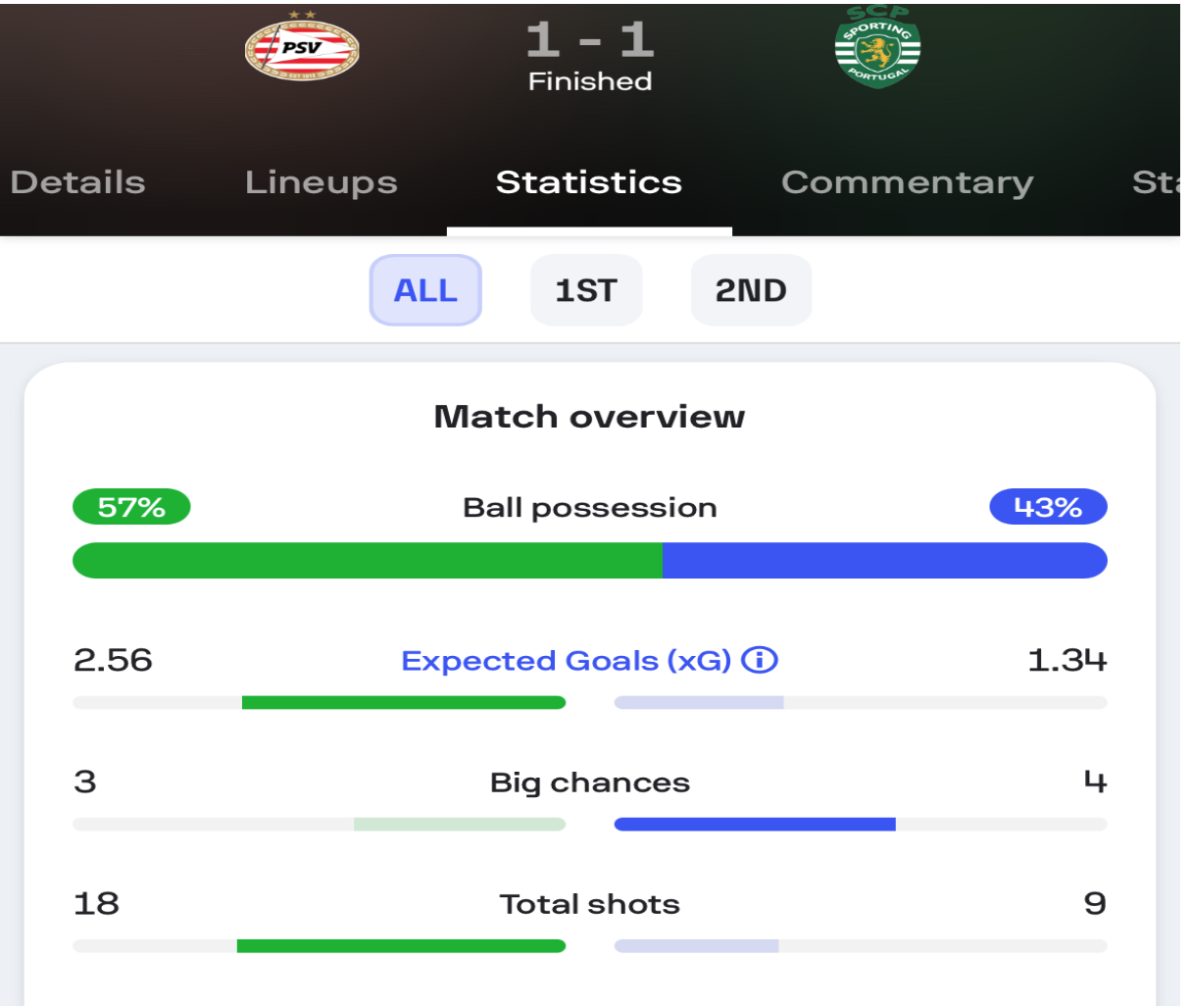
Photos: Sofascore
Amorim’s Sporting do have some struggles to control games against strong teams or those that press intensely. Their Europa League matches against Atalanta in March 2024 highlight this issue, as they resort to long balls to their front 3, relying on physicality. However, Amorim has expressed a desire to control and dominate games, similar to his ambitions as Manchester United manager, promising signs for the future!
Sporting’s bold approach in the attacking phase, aiming to set up a thrilling 3-1-6 formation, carries both potential and peril. This aggressive strategy can leave them a bit exposed at the back if the opposition manages to snatch the ball and launch a rapid counterattack.
However, Sporting has a clever game plan: they rely on their four deeper players to either win crucial duels or slow down their opponents just long enough for their tireless attackers to sprint back into position. It’ll be fascinating to see how this high-risk, high-reward style holds up in the more demanding environment of the Premier League.
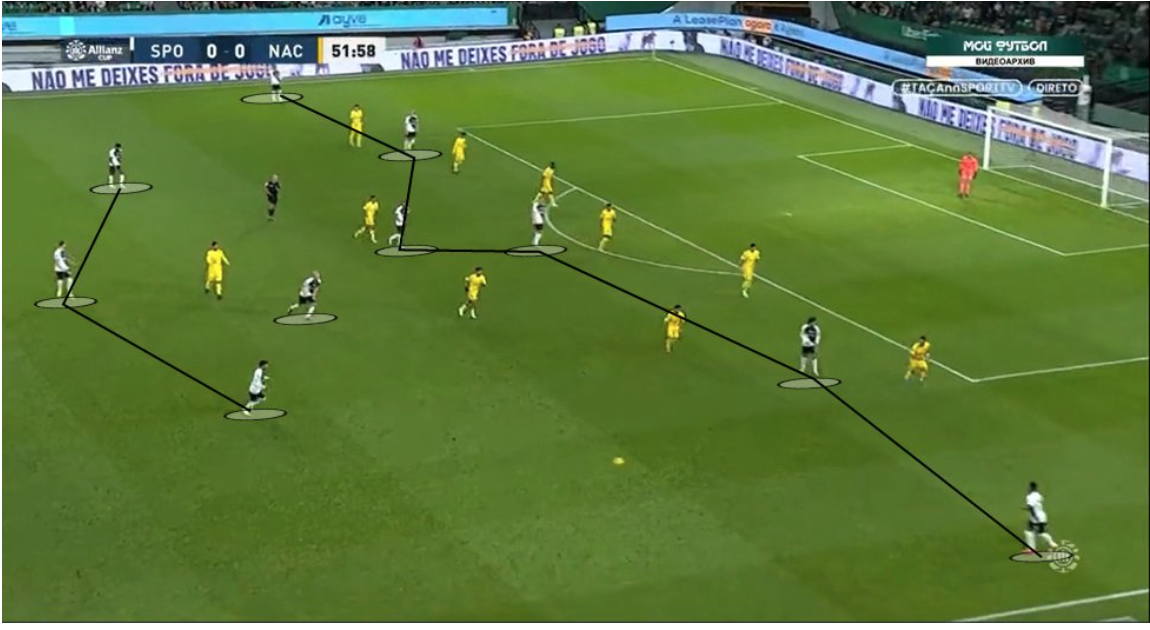
Out of Possession
Amorim’s tactical framework showcases a consistently organised defensive structure, predominantly employing a mid-block complemented by a passive high press. The front three often initiate timely high presses, strategically coaxing opponents to the flanks in an attempt to create traps. This method seeks to manipulate the lateral dynamics of play; however, against high-calibre opposition, such strategies can be exploited, particularly if the passive press is bypassed, resulting in vulnerable spaces in central areas.
This vulnerability often compels Sporting’s back three to retreat, providing crucial time for recovering players to realign defensively. In parallel to their disciplined defensive setup, Amorim’s philosophy prioritises structured and progressive build-up play, ensuring a cohesive transition from defence to attack.
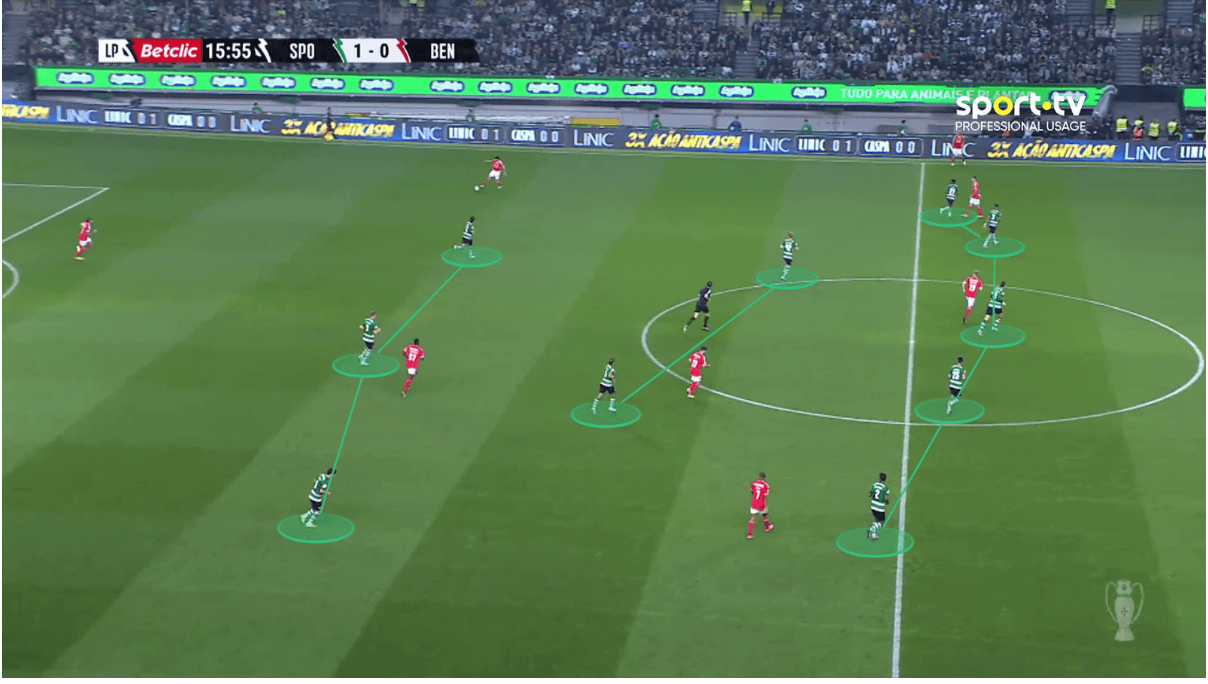
Build up shapes:
A key aspect of Amorim’s build-up play is the use of a 3-2 structure in defence. In this formation, Sporting’s goalkeeper acts as an additional player in possession, allowing the central centre-back—often Sebastián Coates during his time at Sporting—to step out from the defensive line. This movement creates better passing angles. The other two centre-backs spread wider to draw the opposition’s press, which opens up space for passes through the middle or to the flanks.
In a more detailed analysis, Amorim’s teams often adopt a 4-2-2-2 formation during the initial stages of the build-up. This shape facilitates dynamic interactions, where one of the central midfielders—typically a more attack-minded #6—moves into a half-space, while the #10 drops into the opposite half-space.
This setup creates a central box midfield, allowing for an overload on the opposition’s central defenders and providing more options in possession. The goal is not just to maintain possession but to transition quickly into attack, often bypassing the opposition’s press with direct or vertical passes instead of engaging in extensive ball circulation.
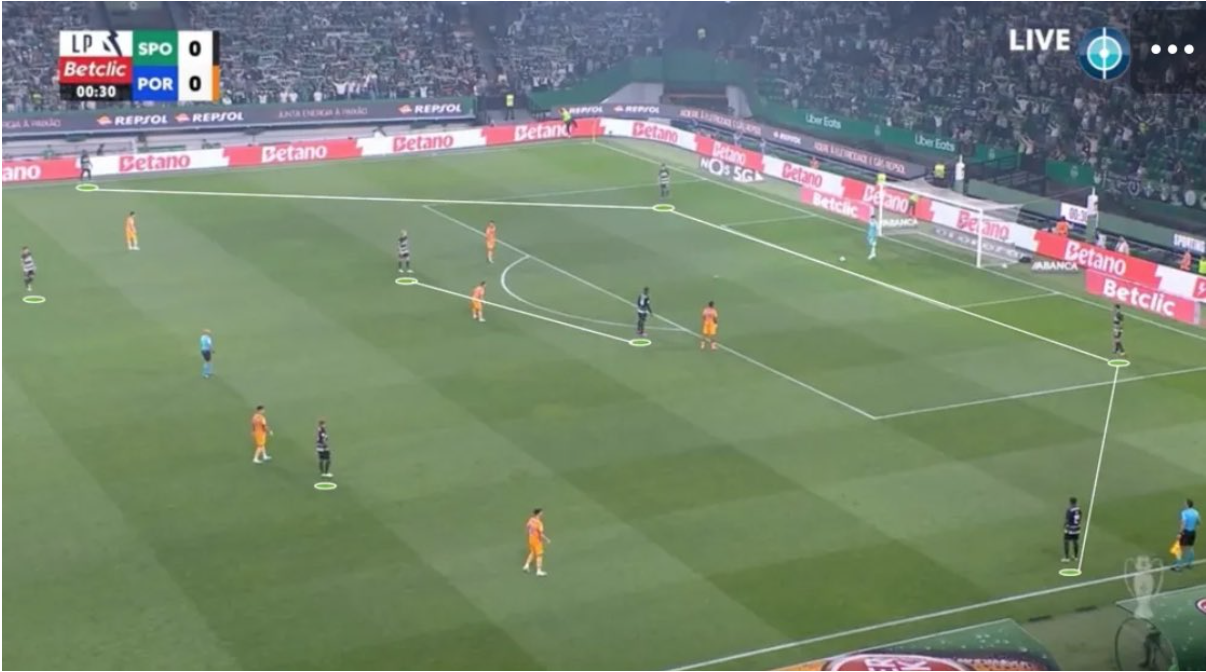
Amorim’s philosophy emphasises verticality, encouraging his players to quickly exploit the spaces behind the opposition’s defence. This is often supported by forwards like Viktor Gyökeres, who pin the defenders back, creating room for the #10s or wingers to receive the ball between the lines. If a direct route isn’t available, Sporting’s setup allows for switches of play to the wing-backs, who are encouraged to stay high and wide, stretching the opposition’s backline and providing width to the attack.
This build-up strategy highlights Amorim’s preference for purposeful possession, aiming not only to keep the ball but also to use it aggressively to create scoring opportunities. His tactics are known for their adaptability, allowing the team to shift formations in response to the opponent’s press, demonstrating a tactical flexibility that has been pivotal to his success at Sporting CP.
In conclusion, Rúben Amorim’s tactical philosophy is a fascinating blend of flexibility, verticality, and risk-reward dynamics. His ability to adapt his approach to different phases of play—whether in possession, out of possession, or during build-up—reflects a manager deeply attuned to the modern demands of football.
While his aggressive attacking setups and disciplined defensive structures have proven successful at Sporting CP, they will undoubtedly be tested in the high-intensity, competitive environment of the Premier League. Amorim’s focus on purposeful possession and proactive transitions hints at an exciting future for Manchester United under his stewardship.
In the next part of this series, we will dive into the current Manchester United squad, exploring how each position fits into this system and how each player fits into Amorim’s tactical framework. From understanding who can thrive in his system to assessing how Amorim’s vision could shape the future of the club, we’ll be delving deep into the inner workings of United’s roster and where the biggest upgrades are needed.
By: @Declan3013
Featured Image: @GabFoligno / Justin Setterfield / Getty Images
